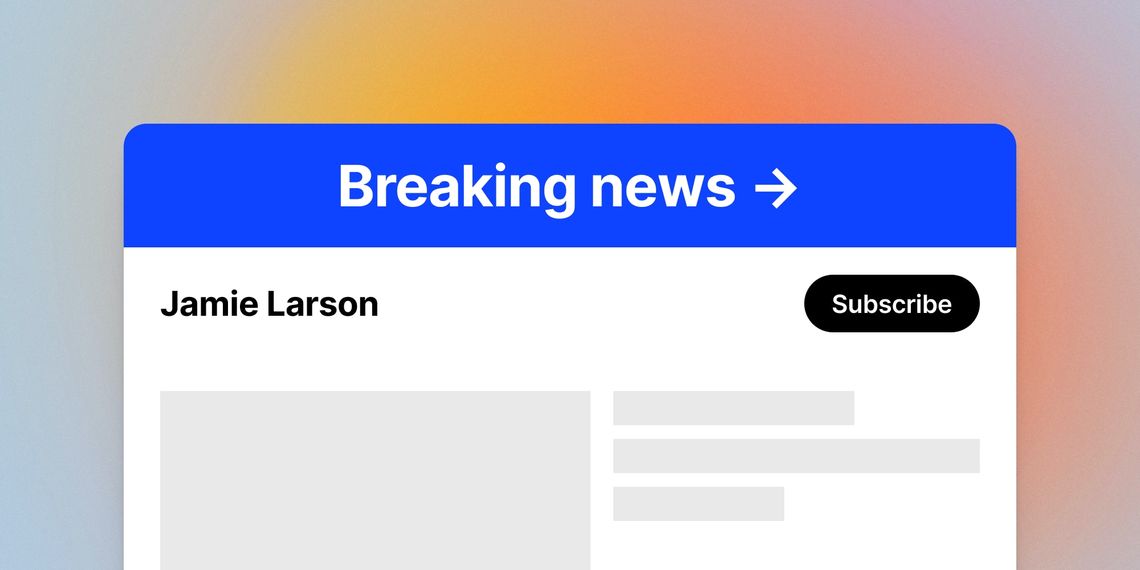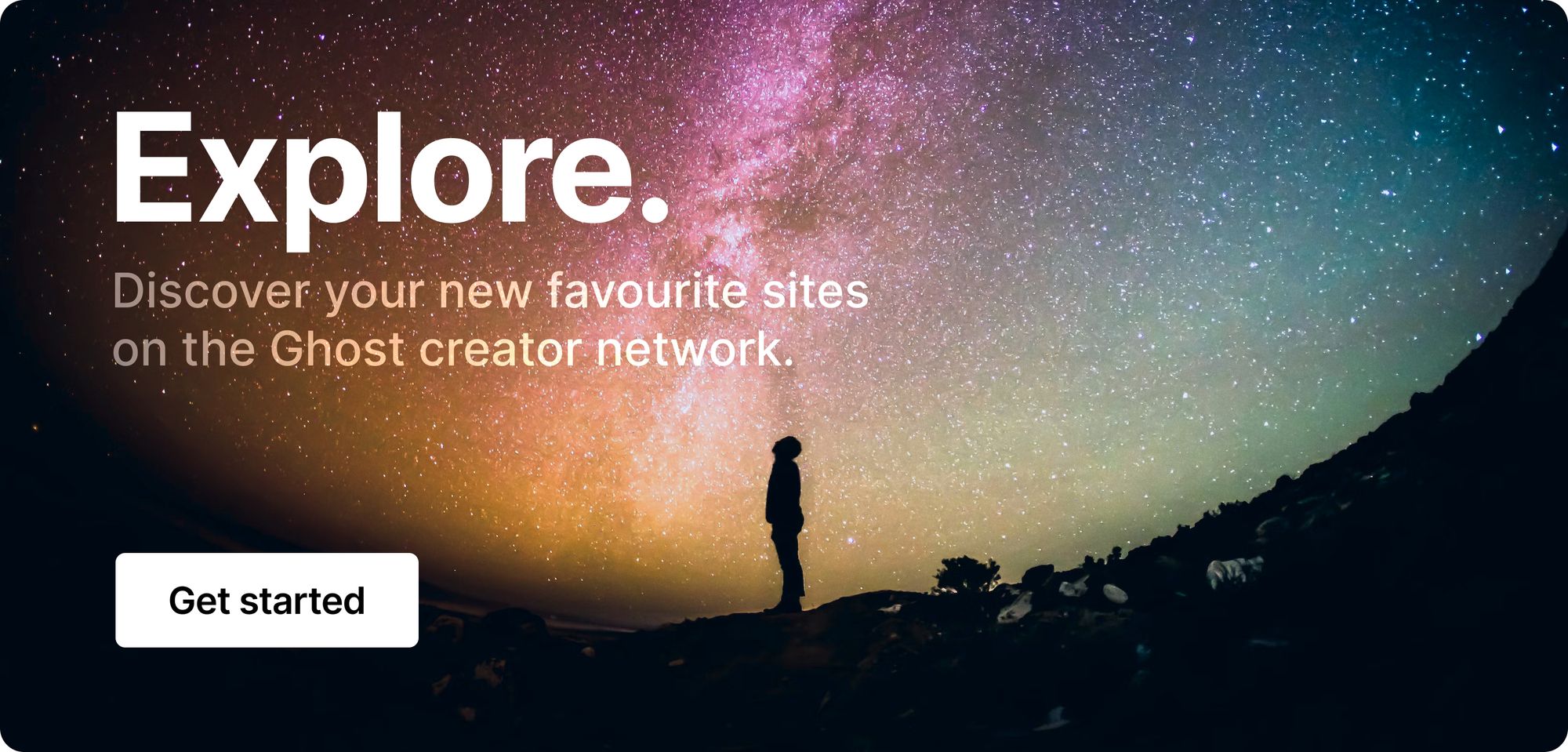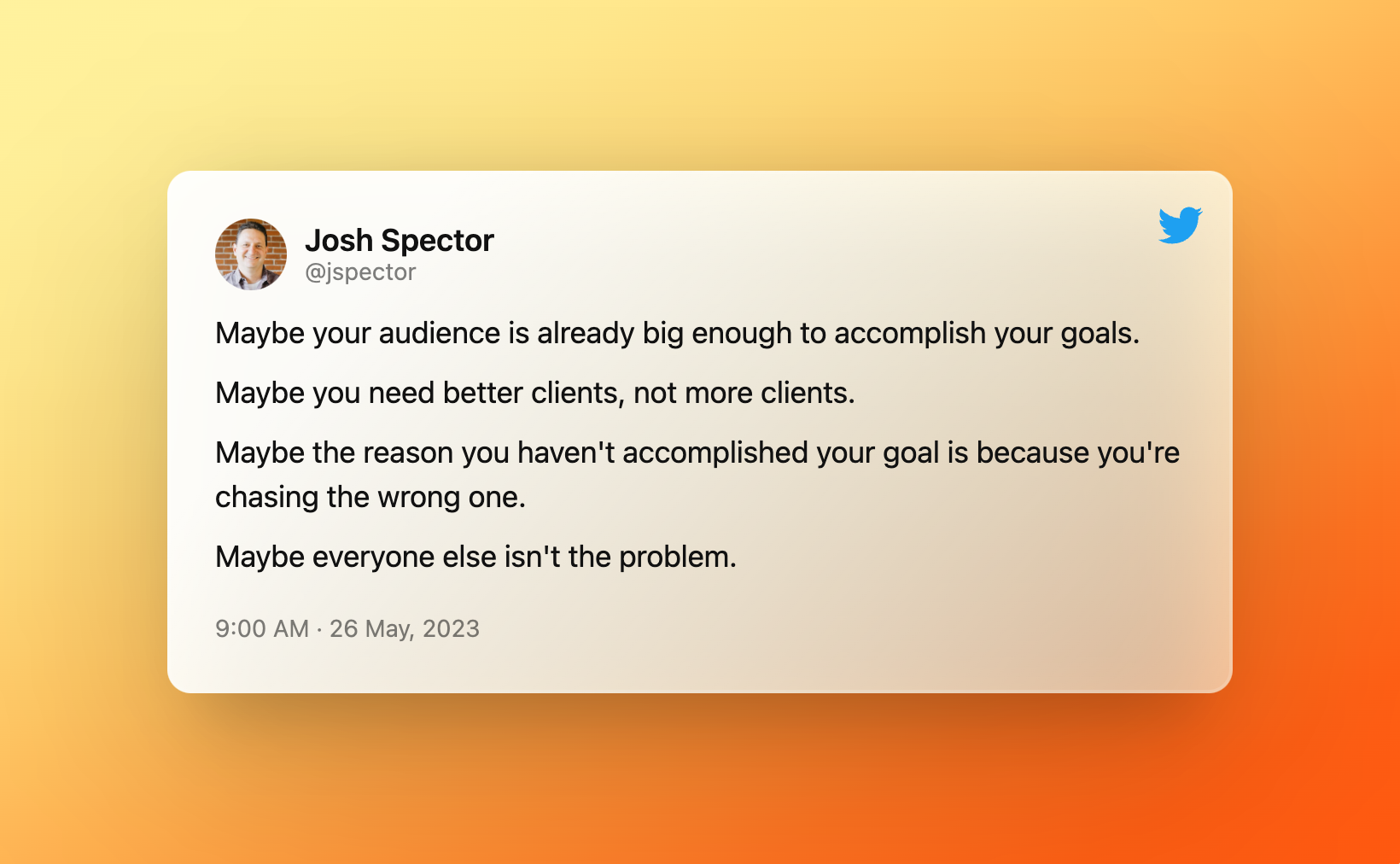🌊 Making a splash
Welcome back to this week's issue of the Ghost Newsletter, your go-to place for the latest insights, ideas, and resources from the world of content creation and publishing. Let's dive in 🏄
💬 In this week's issue:
- Announcements — ICYMI, you can now add announcements to any Ghost site in a few clicks.
- Decisions — three tips to help make more informed decisions for your content and business.
- Ideal followers — understand your ideal follower profile to produce content that is irresistible (to your ideal followers).
Was this email forwarded to you? Subscribe here!
Let your readers know what's new

For those times when you need to share big stories, offers, news, or new projects with your audience, Ghost has you covered with the announcement bar feature.
With built-in visibility options, you can decide whether to display your announcements to everyone on your site, to new visitors and free members, or with paid members only.
It's easy to set up an announcement bar (takes a minute or two), and allows you to make a splash about all sorts of things, such as:
- Promote a special offer for paid plans
- Drive incentives with a time-based offer
- Invite visitors to an event
- Announce a new ebook, podcast, or paid course
- Share breaking news
- Invite visitors to complete a survey
- Run a giveaway or competition

Have you taken the announcement bar feature for a spin yet? Read more about how to get started, and drop into the comments 👇 to let us know how you used it!
Interesting stories & ideas 📚
- The EVE framework: Getting backlinks in a post ChatGPT world
- How to grow your audience by dominating on LinkedIn
- Structuring your website for maximum SEO performance
- 60% of Twitter users in the US have taken a break in the past year
- 5 advertising trends that are changing media buying
Decision-making strategies

In a recent Harvard Business Review article, Francesca Gino argues that self-serving bias — a tendency to interpret information with confirmation bias to serve our own interests – can be harmful to the decisions we make in life and business.
A few years ago, I advised a sales team whose job involved making cold calls. The team members would often attribute successful sales to their own skill and expertise, while blaming external factors like poor leads or bad timing for any failures. This is just one of many examples I can think of from my experience working with leaders across organizations and industries that illustrates a common human bias.
To combat this self-serving bias, and make better-informed decisions, Francesca recommends three strategies:
#1 Examine objectively
Consider the source of your information and review the information objectively.
By considering the source of the information you’re relying on, you can become more confident that in deciding on next steps, you’re using relevant information to weigh others’ thinking and actions, as well as your own.
#2 Think counterfactually
Counterfactual thinking involves considering different courses of action you could have taken to get an understanding of the factors that influenced your choice and identify changes you might want to make to future choices.
Engaging in counterfactual thinking can help you think through choices you’ve made by helping you expand your focus to consider multiple frames of reference beyond the present outcome. This type of reflection encourages you to take note of different perspectives and reach a more balanced view of your choices.
#3 Challenge your assumptions
Self-serving bias can be addressed by seeking out new information that challenges your existing beliefs. This can feel uncomfortable, but persevering with this approach can help expand perspectives and generate new ideas.
Take Satya Nadella, the CEO of Microsoft. When he assumed the role in 2014, he recognized that the company’s focus on Windows and Office was limiting its growth potential. Not only did the company need a new strategy, he recognized that the culture needed to evolve as well.
Actively seeking out information that challenges existing preconceptions allows for beliefs to be updated based on new evidence and reduces the limitations of self-serving biases.

Your ideal follower profile

Move over "customer personas", Justin Welsh has a new term: the Ideal Follower Profile (IFP).
Your Ideal Follower Profile (IFP) is the kind of person who’ll get the most value from your content, ideas, products, and services. It’s the person who’s going to want and need exactly what you’re creating & selling.
Justin argues that understanding your IFP can be the difference between the success or failure of your content product.
An IFP can include traits like age, location, income level, occupation, and much more. But try not to get too lost in the details. Focus most of your attention on figuring out your IFP's pain points and aspirations. It's your mission to get closer to understanding what your ideal follower wants, what they need, and what blockers are getting in their way.
If you can visualize an actual person, that will help you bring your IFP to life, and you can focus your energy on helping that exact person.
Here's a summary of the process Justin shares to get closer to understanding your IFP:
#1 Start with a hypothesis
Understanding the pain points and aspirations of your IFP begins with a hypothesis. Approach people who seem to fit the bill of your IFP with a hypothesis, and listen to what they have to say to get closer to the truth. Remember, you're searching for pain points and aspirations.

#2 Tailor your content to pain & aspiration
With a clearer picture of the pain and aspirations that are shared by your IFP, it's time to put what you discovered to work and tailor your content to meet your audience where they are at.
As people interact with your content, you'll get a sense as to whether or not your hypotheses were wrong or right. You can always iterate and experiment to see what truly resonates.
#3 Iterate and optimize
Once you have people listening to you and consuming your content, diving deeper into your IFP gets easier.
If you publish high-quality, laser-focused content like that for 3-6 months, it’s almost impossible not to gain a small & ideal following.
Continue having conversations with potential and existing customers. Keep testing your hypothesis, and layer this information into your creative work. The more people you speak to, the more you'll be able to identify the trends from the outliers.
The goal is to have a balance between specificity and market size. Enough people to serve, and specific enough to stand out [...] if you can get this right, you’re going to create content that resonates deeply with the exact follower you want for your business. And guess what? Ideal followers become the best customers.
Curator's pick

Enjoy this newsletter?
Forward to a friend, sharing is caring.
Anything else? Hit reply to send us feedback or say hello. We don't bite!
Join an invite-only community! Connect with like-minded people who create content professionally — apply here.






